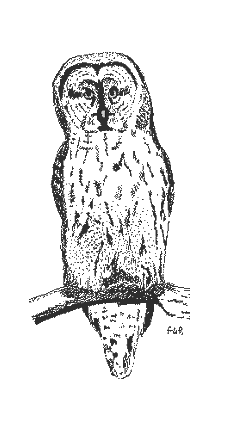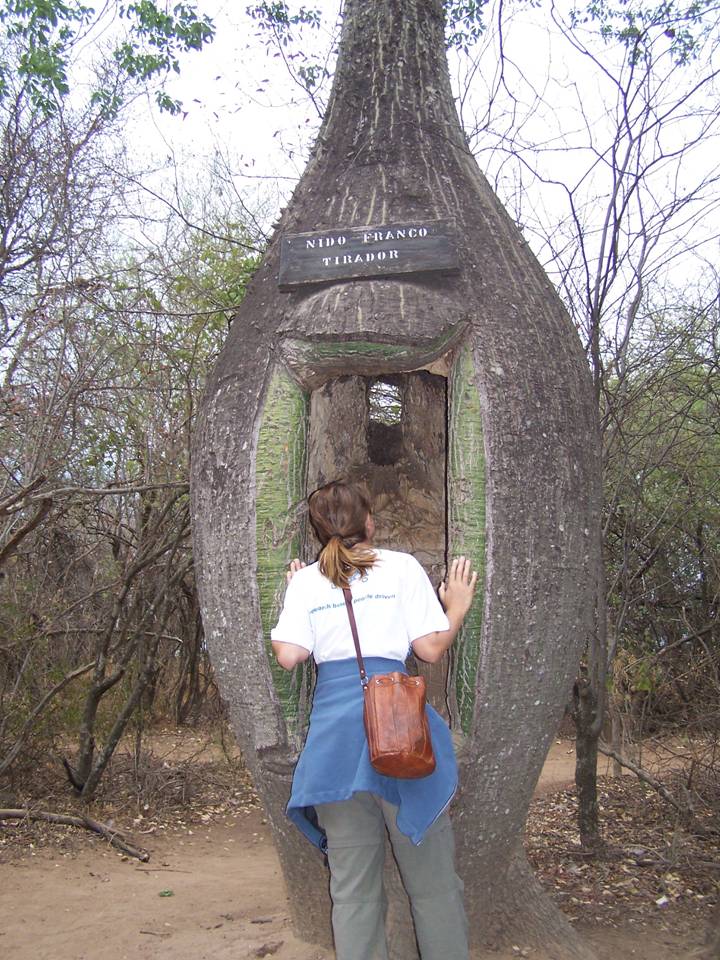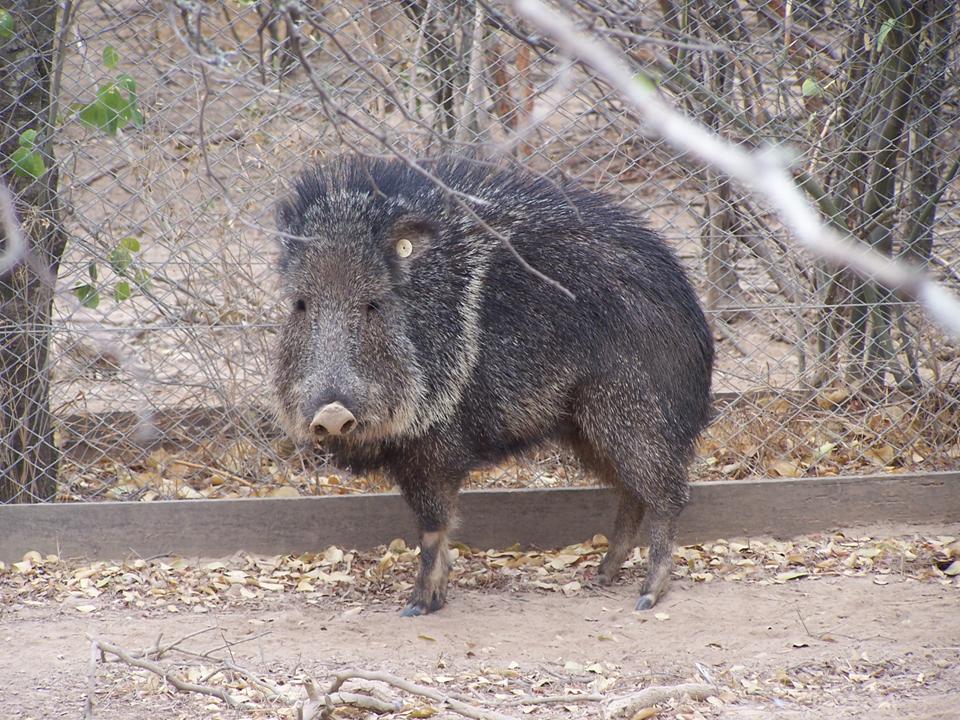Designed by Paul Smith 2006. This website is copyrighted by law.
Material contained herewith may not be used without the prior written permission of FAUNA Paraguay.
Photographs on this web-site were taken by Paul Smith and are used with permission.
CENTRAL CHACO SHORT BREAK
Introduction:
A shortened version of the Chaco Explorer tour this trip combines wildlife watching with some areas of cultural and historic interest with visits to the peccary breeding project at Fortín Toledo, the Chaco War museum at Fortín Boqueron, the Mennonite colonies and one of the most eyecatching sights in Paraguay, the flocks of wintering flamingoes and waterfowl at Campo Maria. Optional night drives to look for mammals. This is a trip for the traveller keen to experience all aspects of the magificent Paraguayan Chaco and the remarkable people and animals that inhabit it.
Chaco Peccary (right) Catagonus wagneri
FAUNA Paraguay tours are recommended by:
FAUNA Paraguay eco-tours are promoted by:
|
|
|
|
 |
Birdfinders |
|
Main Targets:
This tour is a hybird between a cultural and eco-tour. Though we will see some spectacular animal life it is not for serious wildlife watchers who should see the Chaco Explorer and Chaco Safari tours if wishing to visit the Chaco.
Recommended duration:
To get the best from this tour we suggest at least 5 days. A minimum of 4 days is required to complete this tour. This tour is available all year.
Best time to visit:
The Chaco is extremely hot from October to March. Temperatures are more pleasant during the winter months (April to September), which is also a great time of year for migrant waterfowl including flocks of wintering Greater Flamingo. Though it doesn´t rain much up here, the "rainy season" is from October to November when mud can occasionally be a problem. However this is also the best time of year for reptiles and amphibians.
Itinerary:
Day 1 - Wildife-watching along the Humid Chaco en route to Loma Plata. Optional night drive.
Day 2 - Tour of Loma Plata and visit to Mennonite Museum in the morning. Visit to Campo Maria Private Reserve in the afternoon. Night drive.
Day 3 - Tour of Filadelfia in the morning and visit to Jakob Unger Museum. Visit to peccary breeding project and Chaco War site at Fortín Toledo in the afternoon.
Day 4 - Morning at Fortín Boquerón and Chaco War museum. Afternoon return to Asunción and end of services.
(Itineraries are subject to change according to levels of animal activity or client´s preference.)
What else might we see?:
Departing from Asunción we will cross the Rio Paraguay via the humped Puente Remanso bridge which affords great views along the river and a skyline of the capital in the distance. Once over the bridge we are officially in the Chaco, though for the first hundred kilometres or so you would scarcely realise it. We have a fairly long journey to the Central Chaco which will be our base, but we will break it up by animal watching at roadside pools along the Ruta-Trans Chaco. The first 300km or so of our journey take us through the Humid Chaco habitat, essentially a huge, flat seasonally flooded savanna dotted with palm trees. After rain temporary pools form throughout this region and attract a remarkable diversity of bird and animal life, with dozens of species of waterbirds including the remarkable, prehistoric-looking Jabiru, whilst several species of birds of prey perched on posts are remarkably willing to be photographed.
Our lunch stop will be at Pirahú, famous nationally for its tasty empanadas, which are worth the journey alone. A little further along we will have a brief rest stop at Buffalo Bill´s, the lake there is usually full of Spectacled Caiman, a type of alligator. On arrival at Loma Plata, capital of Menno Colony, one of the three Mennonite Colonies in the Central Chaco we will have a chance to rest and get over the journey before enjoying a traditional asado buffet dinner with all you can eat, locally-produced Chaco beef on offer in more different cuts than you even knew existed. If you are not too tired a night drive in the area to the north of here offers us an opportunity to see mammals which may include various species of armadillo, Geoffroy´s Cat, Crab-eating Fox, Crab-eating Raccoon and maybe even a Lowland Tapir.
On the morning of our second day we will finish our ample Brazilian-style breakfast and tour the Loma Plata colony. Our first stop will be at the Mennonite Museum which provides a fascinating history of the Mennonite colonisation of this extremely hostile environment, a process that cost the lives of the vast majority of the original settlers. Upon leaving you´ll have a new respect for what the Mennonites have achieved. We will also visit the Trebol Dairy Factory where the smell of Dulce de Leche will drive those with a sweet tooth wild, as well as learning some more about the Mennonite way of life with a visit to the extraordinarily enormous Co-operative Supermarket. During the afternoon we will head east of here to the Campo Maria Private Nature Reserve. There is some spectacular bird life on show, especially during the winter months when flocks of hundreds of Greater Flamingos gather on the salty lake with ducks and other waterbirds such as the snow-white Coscoroba Swan swimming between them. Our drive back to Loma Plata will be after dark when we will hope to see some mammals in our spotlight.
On our third day we will visit Filadelfia - not to be confused with the US city of the same name - capital of Fernheim Colony. The Jakob Unger Museum here contains a fascinating display of birds and animals collected by the natural history collector Jakob Unger, whilst the lower floor has an exhibition of indigenous artefacts from the local Chaco tribes. All are housed in the building that was originally the administrative centre of the three Mennonite colonies. After lunch we will continue to Fortín Toledo where we will learn a little about the history of the Chaco War, surely one of the most brutal conflicts in human history. We will visit a cemetary and also see some of the preserved trenches in which the soldiers lived. Another reason for coming here is to visit the fascinating Proyecto Tagua. Established by San Diego Zoo this a breeding and release project for the three species of pig-like peccary, but especially for the critically endangered Tagua - the Chaco Peccary. Known only from fossils this species was remarkably discovered alive and well in the Paraguayan Chaco in 1976! Here we will meet all three species of peccary and marvel at their distinctly different characters; the Chaco being large but timid and nervous, the White-lipped mean and aggressive and the Collared tame and curious.
Our final morning begins with a trip to the Chaco War Museum at Fortín Boquerón. One of the longest and bloodiest battles of the conflict, Boquerón is now a memorial to the fallen. Here we will see the remains of the trenches and the ingenious use of "bottle trees" as sniper´s nests - from the front they just looked like woodpecker holes, until the rifle appeared! There is also an excellent museum with images and first hand accounts of the battle from the soldiers, plus machinery and other artefacts. After lunch we make our way back to Asunción.

Chaco War Sniper´s nest at Fortín Boqueron
What does it include?:
The price includes pick-up from and return to Encarnación hotel, accommodation, transport, food, non-alcoholic drinks and guiding fees.
It does not include travel insurance, personal expenses, alcoholic drinks or travel costs incurred before the beginning of the tour or after return to Encarnación.
For further information or to book your tour email us at faunaparaguay@yahoo.com.ar




